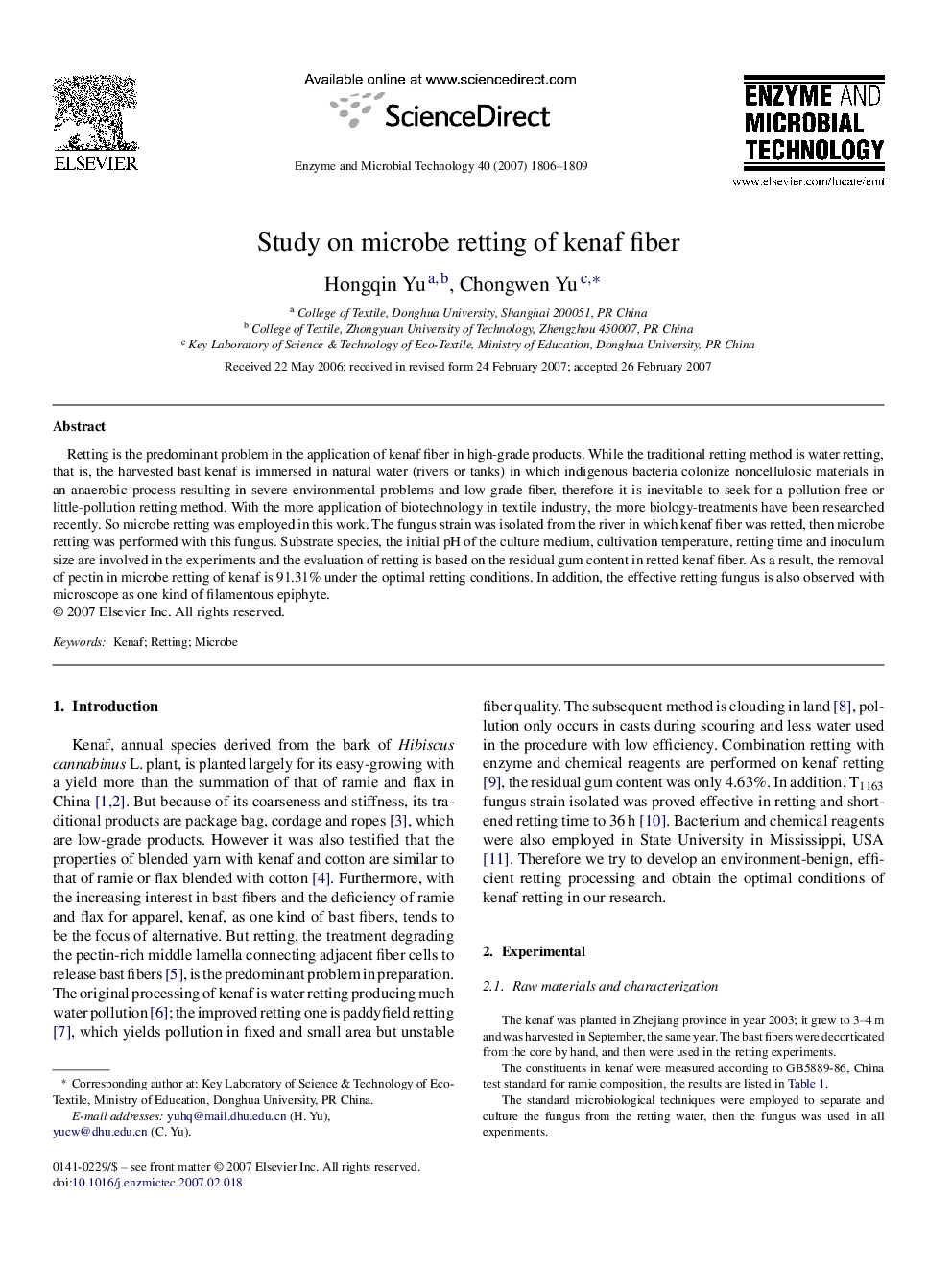| کد مقاله | کد نشریه | سال انتشار | مقاله انگلیسی | نسخه تمام متن |
|---|---|---|---|---|
| 18132 | 42712 | 2007 | 4 صفحه PDF | دانلود رایگان |

Retting is the predominant problem in the application of kenaf fiber in high-grade products. While the traditional retting method is water retting, that is, the harvested bast kenaf is immersed in natural water (rivers or tanks) in which indigenous bacteria colonize noncellulosic materials in an anaerobic process resulting in severe environmental problems and low-grade fiber, therefore it is inevitable to seek for a pollution-free or little-pollution retting method. With the more application of biotechnology in textile industry, the more biology-treatments have been researched recently. So microbe retting was employed in this work. The fungus strain was isolated from the river in which kenaf fiber was retted, then microbe retting was performed with this fungus. Substrate species, the initial pH of the culture medium, cultivation temperature, retting time and inoculum size are involved in the experiments and the evaluation of retting is based on the residual gum content in retted kenaf fiber. As a result, the removal of pectin in microbe retting of kenaf is 91.31% under the optimal retting conditions. In addition, the effective retting fungus is also observed with microscope as one kind of filamentous epiphyte.
Journal: Enzyme and Microbial Technology - Volume 40, Issue 7, 1 June 2007, Pages 1806–1809